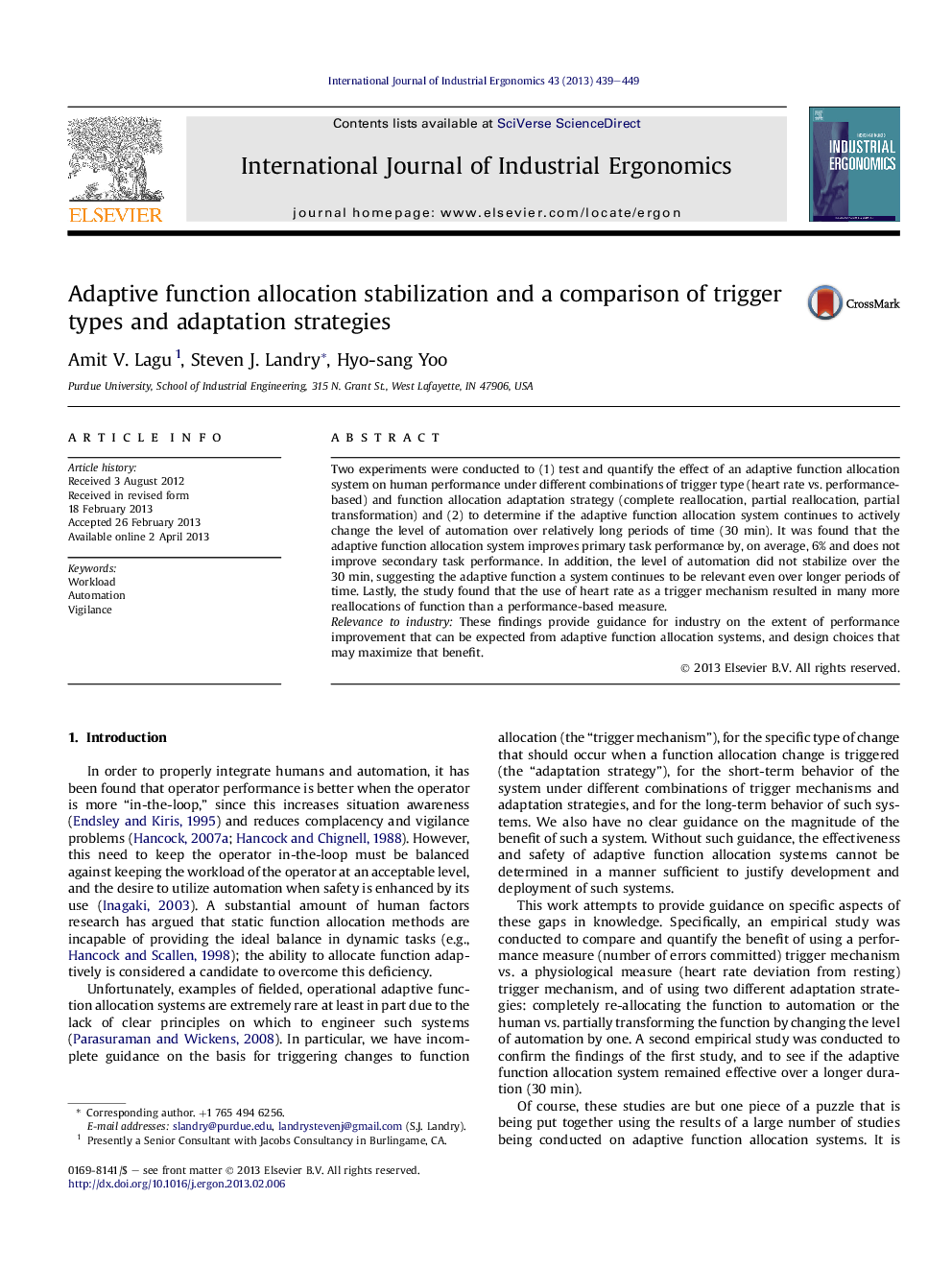| کد مقاله | کد نشریه | سال انتشار | مقاله انگلیسی | نسخه تمام متن |
|---|---|---|---|---|
| 1096048 | 1487438 | 2013 | 11 صفحه PDF | دانلود رایگان |

• Adaptive automation resulted in a 6% improvement in primary task performance on average.
• Adaptive automation resulted in no benefit for secondary tasks.
• The use of heart rate as a trigger mechanism caused many more reallocations of function.
• The level of automation did not stabilize over longer-term use of the adaptive automation system.
Two experiments were conducted to (1) test and quantify the effect of an adaptive function allocation system on human performance under different combinations of trigger type (heart rate vs. performance-based) and function allocation adaptation strategy (complete reallocation, partial reallocation, partial transformation) and (2) to determine if the adaptive function allocation system continues to actively change the level of automation over relatively long periods of time (30 min). It was found that the adaptive function allocation system improves primary task performance by, on average, 6% and does not improve secondary task performance. In addition, the level of automation did not stabilize over the 30 min, suggesting the adaptive function a system continues to be relevant even over longer periods of time. Lastly, the study found that the use of heart rate as a trigger mechanism resulted in many more reallocations of function than a performance-based measure.Relevance to industryThese findings provide guidance for industry on the extent of performance improvement that can be expected from adaptive function allocation systems, and design choices that may maximize that benefit.
Journal: International Journal of Industrial Ergonomics - Volume 43, Issue 5, September 2013, Pages 439–449